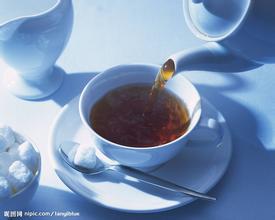A light and pure Costa Rican coffee estate. Flavor and taste characteristics. Fine coffee beans.
Both Costa Rica and Guatemala are legendary places to produce the most perfect and high-quality coffee, and Costa Rican coffee has a reputation as Switzerland among coffee-producing countries. The coffee produced in Costa Rica is known for its strict quality, and inferior or inferior goods are often discarded.
Because Costa Rica is located in a volcanic area, like Sumatra in Indonesia, the soil is very fertile and the mountain drainage is good; Tarrazu, located in the south of the capital SanJose', is one of the major coffee producers in the world. Although the coffee is pure, it can be said to be the best in single coffee. LaMinitaTarrazu is a famous local product, with an annual output of only more than 70,000 kilograms. in addition, the coffee grown in Nameleta Tarasu does not use pesticides or artificial fertilizers. The picking process is to select the size and size of coffee beans through "electric eyes" before picking them by hand. In addition to Namerita Tarasu, Costa Rica also has many famous producing areas, such as Juan Venas (JuanVinasPR), Montibernu (MonteBello) and so on.
Costa Rican coffee generally grows above 1500 meters above sea level, and its characteristics are called "extra hard beans". Because coffee beans are hearty, they have a high flavor, and because coffee beans grow at a higher altitude, the relatively low temperature at night slows the growth of trees. and high altitude can receive more adequate rainfall, relatively speaking, the taste of coffee beans will be more intense other kinds of Brazilian coffee such as Rio Parana can be produced in large quantities because it does not require too much care. Although it tastes rough, it can be regarded as a kind of high-quality and inexpensive coffee. It has its own standard because it is distributed all over the country and its solid quality varies. It has its own standard (NO.2~NO.8 according to the number of sundries, NO.13~NO.19 according to the size of beans, six grades according to taste). Almost all Arabica varieties are of good quality and stable in price. The most famous one is Costa Rica, which has been a necessity of blended coffee and is familiar to the public since ancient times.
Excellent Costa Rican coffee is called "extra hard beans". This kind of coffee can grow above 1500 meters above sea level. Altitude has always been a problem for coffee growers. The higher the altitude, the better the coffee beans, not only because the higher altitude can increase the acidity of the coffee beans and thus increase the flavor, but also because the night temperature at the higher altitude is lower, which can make the trees grow slowly, thus the flavor of the coffee beans is stronger. In addition, due to the high altitude drop caused by sufficient rainfall, it is very beneficial to the growth of coffee trees. However, its negative effect is to increase additional transportation costs, which is likely to make coffee production unprofitable. Costa Rica's coffee industry has adopted new technologies to increase efficiency, including the use of "electric eyes" to select beans and identify coffee beans of irregular size.
Costa Rican Coffee-Origin
Tarrazu in Costa Rica is one of the major coffee producing areas in the world. The coffee produced is light and pure in flavor and pleasant in aroma. Costa Rica, with its fertile volcanic soil and good drainage, is the first country in Central America to grow coffee and bananas for commercial value. Coffee and bananas are the country's main exports. Coffee was introduced into Costa Rica from Cuba in 1729. Today, its coffee industry is one of the well-organized industries in the world, with a yield of 1700 kg per hectare. Costa Rica, with a population of only 3.5 million, has 400 million coffee trees, and coffee exports account for 25 per cent of the country's total exports. Costa Rica has also benefited from the Central American Society for Agricultural Research in Tarasu.

Important Notice :
前街咖啡 FrontStreet Coffee has moved to new addredd:
FrontStreet Coffee Address: 315,Donghua East Road,GuangZhou
Tel:020 38364473
- Prev

Mellow and sour Hawaiian Kona Coffee Fine Coffee Flavor and Taste Manor
Kona coffee is indeed a treasure in the world and is not easy to find. The real Hawaiian Kona coffee has the sweetness of caramel, which makes people enjoy the unique pleasure and leads you slowly into the detached state of tasting coffee. Of all the coffee producers, Hawaii has the most stringent management of the coffee industry, the highest labor costs and the best level of investment. Coffee from Hawaii
- Next

Introduction to the characteristics of Indonesian boutique coffee Java coffee flavor manor area
The Dutch first spread coffee to Central and South America in the 1820s. Coffee spread from the Dutch colonies to French Guiana and Brazil. During their colonization, the Dutch grew coffee in Malaba, India, and brought it to Batavia in what is now Java, Indonesia, in 1699. The Dutch colony once became Europe.
Related
- Detailed explanation of Jadeite planting Land in Panamanian Jadeite Manor introduction to the grading system of Jadeite competitive bidding, Red bid, Green bid and Rose Summer
- Story of Coffee planting in Brenka region of Costa Rica Stonehenge Manor anaerobic heavy honey treatment of flavor mouth
- What's on the barrel of Blue Mountain Coffee beans?
- Can American coffee also pull flowers? How to use hot American style to pull out a good-looking pattern?
- Can you make a cold extract with coffee beans? What is the right proportion for cold-extracted coffee formula?
- Indonesian PWN Gold Mandrine Coffee Origin Features Flavor How to Chong? Mandolin coffee is American.
- A brief introduction to the flavor characteristics of Brazilian yellow bourbon coffee beans
- What is the effect of different water quality on the flavor of cold-extracted coffee? What kind of water is best for brewing coffee?
- Why do you think of Rose Summer whenever you mention Panamanian coffee?
- Introduction to the characteristics of authentic blue mountain coffee bean producing areas? What is the CIB Coffee Authority in Jamaica?

